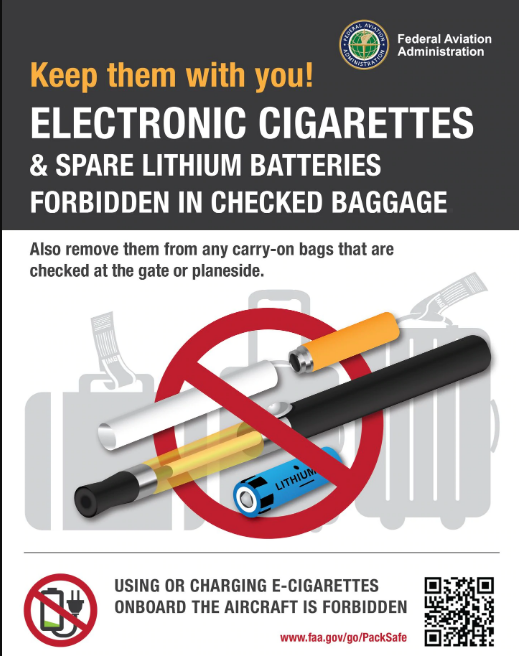Electronic cigarettes (e-cigarettes), vapes, and similar devices are subject to strict regulations on airplanes due to safety concerns, particularly regarding lithium batteries and the prohibition of smoking.
Carrying E-Cigarettes on Board
Yes, you can bring e-cigarettes on a plane, but only in your carry-on baggage or on your person. They are strictly prohibited in checked luggage worldwide.

- Batteries: Spare lithium batteries must also be carried in carry-on baggage. Battery terminals must be protected (e.g., in original packaging, battery case, or by taping terminals).
- E-Liquid: Follow the standard liquids rule for carry-on: containers no larger than 3.4 ounces (100ml) per item, all fitting within one quart-sized, transparent, resealable plastic bag.
Using E-Cigarettes Onboard
Using e-cigarettes (vaping) is universally prohibited on all commercial airline flights. This ban applies throughout the cabin, including lavatories.
- Vaping violates strict no-smoking regulations enforced by airlines and aviation authorities.
- Tampering with smoke detectors in lavatories is a serious federal offense.
Airline Enforcement & Consequences
Airlines uniformly enforce these rules. Violations can lead to:
- Confiscation of the device.
- Removal from the flight.
- Fines imposed by aviation authorities.
- Potential placement on an airline no-fly list.
Key Airline Policies (Summary)
- Carry: Allowed in carry-on ONLY (devices & spare batteries).
- Check: Strictly forbidden in checked bags.
- Use: Prohibited entirely during flight (taxi, takeoff, cruise, landing).
- Charging: Never charge devices onboard using aircraft USB ports or power outlets.
Always check your specific airline’s website for the most current regulations before flying.








